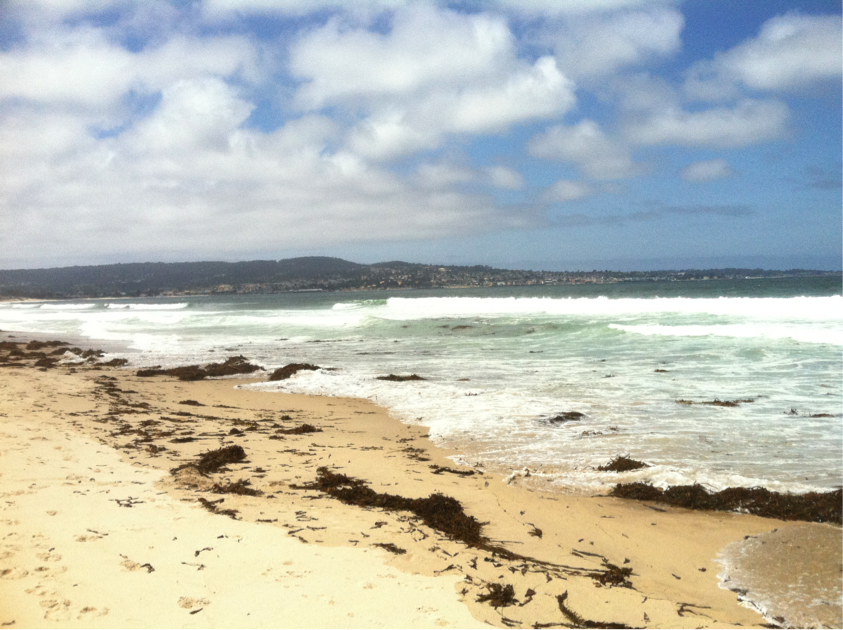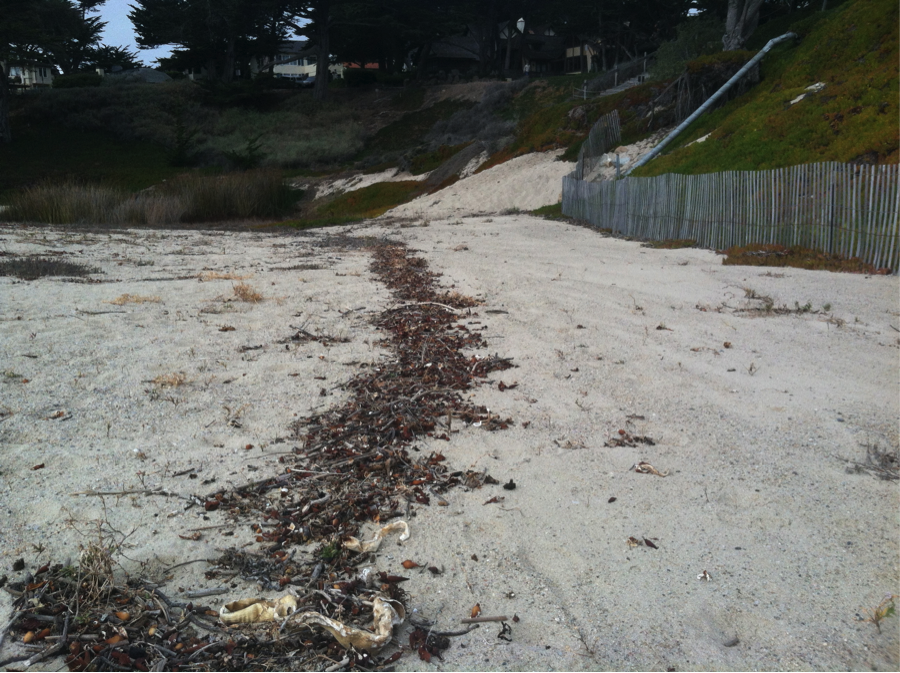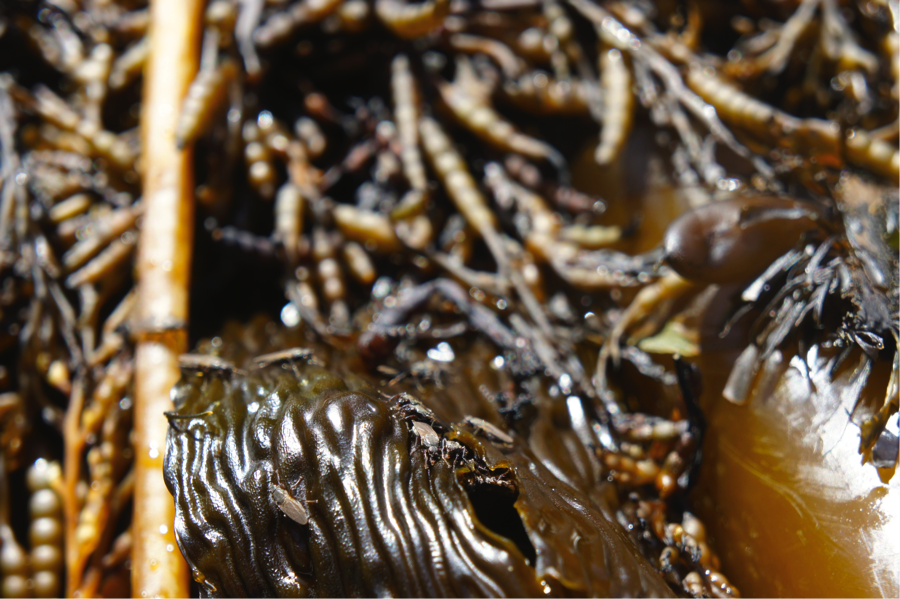By Jarred Klosinski, Phycology Lab
If you’re like me and take long walks on the beach, you may have noticed more mounds of algae along the shore. These mounds are called beach wrack and can contain kelps as well as seagrasses. Other types of seaweeds including red and green algae are also found, but not as often.

Why is the wrack on the beach in the first place? Waves remove seaweeds from the kelp forest, which is then deposited on the shore during high tide. During fall and winter months this phenomenon is most common due to larger waves and annual die-offs of some species that only live for a year.

Fun fact: During El Nino years, entire kelp forests can be removed due to temperature and nutrient stresses in addition to large waves!

Although wrack may seem like an eye sore and maybe even smell, wrack serves an important purpose since it is used by multiple species from flies to shorebirds to name a few (even dogs eat it). Kelps are full of nutrients since they require a highly productive zone to survive. As the wrack is decomposed and consumed on land, these nutrients are released supporting the growth of other organisms.

